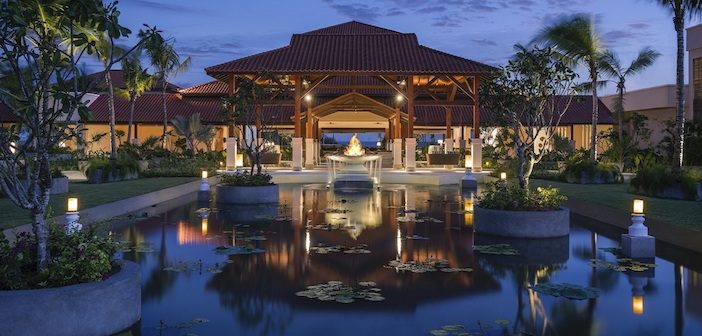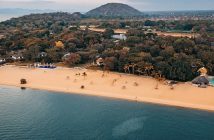Most people assume that India is the home of Ayurveda. In fact, it’s the health care of choice in Sri Lanka, too, with a tradition going back centuries. I was reliably informed, in fact, that the reason the Dutch dropped like flies when trying to establish their colony in Colombo was because they refused to consider the Ayurvedic remedies for yellow fever and malaria. They plumped for opium instead. They still died but at least they didn’t mind it so much…
Much of Ayurveda rests on the importance of prevention over cure. And this is very much down to what you as an individual have as potential weaknesses. I don’t know whether anyone has yet studied the relation between genomics and the Ayurvedic doshas but it would be interesting to see how they lined up.
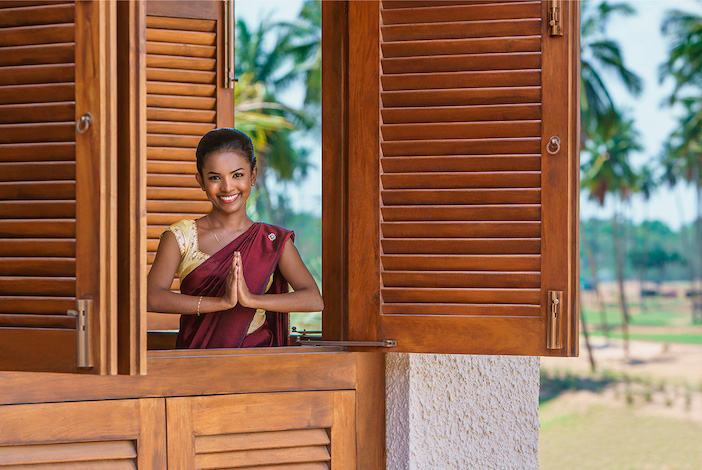
So very quick breakdown. In Ayurveda, there are three doshas – pitta (fire), vata (air) and kappa (earth). The doshas relate not just to your body type but your personality, too. So (and this really is a very simple example, believe me), pitta is likely to have digestive problems, a quick temper and reddish colouring. As a result, if you are pitta, you should avoid salt and spicy food and try meditation and relaxation techniques to counter stress. It is unlikely, though, that you are just one dosha. You are more likely to be a mixture of at least two in varying proportions and this can change during the course of your life, too, often influenced by your lifestyle.
All of this means that going to an Ayurvedic spa is not an off-the-peg experience. So when I went to the beautiful Chi spa at the Shangri-la Hotel in Hambantota in the south of Sri Lanka, the first thing I did was see the Ayurvedic doctor. This is nothing like seeing a western doctor. For a start, Dr Sudarma is in her seventies, tiny and wearing a sari, covered with colourful angel fish. She is very quietly spoken, looks intently at you (not a screen) and takes your pulse – or pulses, in fact – for several minutes, holding three fingers on your wrist (left for women, right for men). She presses these to varying depths, separately and together. It feels a bit like being the fretboard of a sitar. This, combined with her visual assessment of you and a few personal questions tells her all she needs to know. In medical terms, it doesn’t get more face to face than this.
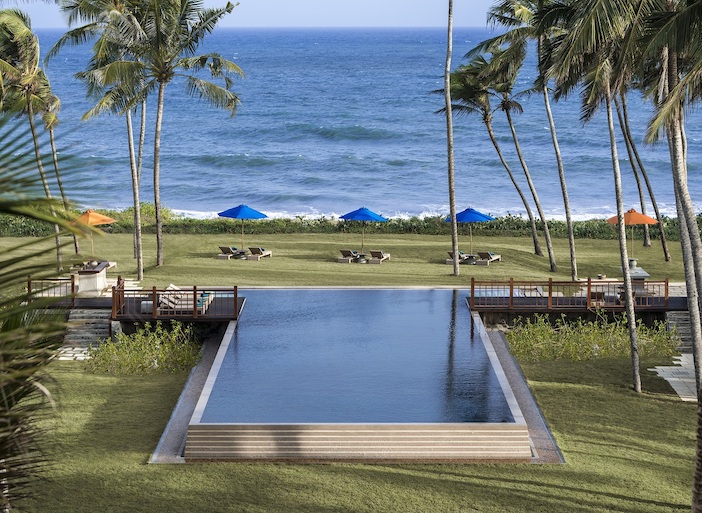
So what did I discover? My food should have very little salt or oil, I should have three meals a day (no snacking) and take lots of exercise. I should favour fish over meat as I had to take care to protect my heart. My massage would be vigorous and quite strong – this may have been an antidote to my tired, jet-lagged metabolism. And my therapist, Kaumini, was further instructed on the kinds of techniques she should use on me.
The treatment rooms look like traditional thatched huts with folding doors that pull back to reveal the lily pond or the garden. The one bit of equipment in the spa is an old-style sphygmometer for measuring blood pressure. I don’t know whether it was being in Sri Lanka or the calming nature of the spa garden where I’d been rocking on a swing for a while before Dr Sudarma arrived but my blood pressure reading was markedly lower than when I last measured it back in London. Dr Sudarma seemed quite satisfied with this and called over my therapist, Kaumini, and gave her instructions as to the oil (there are 20 she can choose from), pressure and style of massage to be used. My massage had been thus medically prescribed…
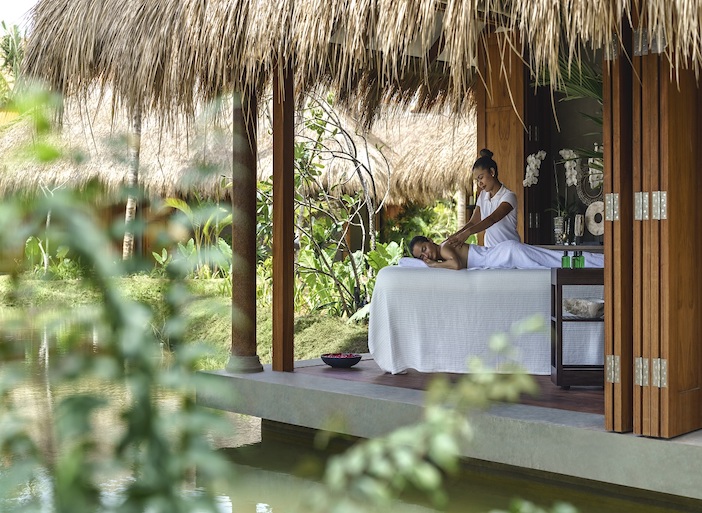
We begin with me sitting on a throne-like chair wrapped in a green cotton sarong and with my feet in a bowl of warm water and cardamom leaves. It smells and looks like a herbal infusion. Before she starts the actual massage, Kaumini whispers blessings for health and a long life (in English as well as Sanskrit). She then moves on with plenty of hot oil to massage into my shoulders, then follows the oil with super-hot boluses (muslin-wrapped packs heated up in a steamer) that she pats over the tops of my shoulders and down my back. Then I cross to the bed and lie down on my back. There are no towels laid out, just thin cotton sarongs that won’t simply soak up the quantities of hot oil that are about to be poured over me. It’s my skin that does the soaking up here.
This is the point at which you put out of your mind all images of your usual relaxing massage. This one has plenty of pressure, manipulation of all the joints, hacking and sawing (am I a woman or a tree, I wonder, at one point?). The sawing takes place in odd places, too – between my toes, for instance. My toes are popped and snapped (as are my fingers later). More and more oil is poured on. Now I wonder whether I’m a woman or a mackerel…
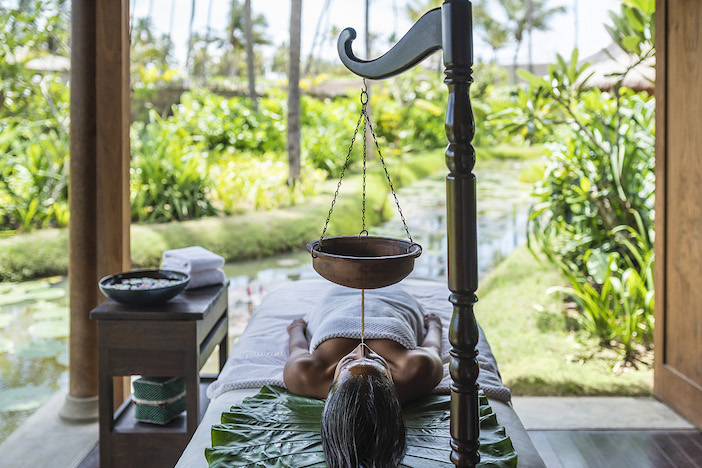
When I turn over for my back massage, there is plenty more deep pressure, especially around the flow of chi (or energy) up the course of the spine. Then it’s back to the boluses at first too hot to touch for more than a moment and then as they cool down (slightly) they are pressed more and more deeply into my back.
At the end I go to sit in the garden to see if I can get any more relaxed than I am already. Difficult, I admit, but this is the most tranquil space imaginable. The relaxation “room” is an outdoor covered platform with sofas and swinging sofas and it appears to float over a lily pond. I am surrounded by jasmine and gardenias, lush foliage and tiny brightly coloured butterflies. Here, I sip herbal tea (also prescribed by the doctor) and drift, both stimulated and serene….
For more information about the Shangri-La Hambantota, Sri Lanka, including details of spa treatments and offers, visit www.shangri-la.com.
Read more of Anna’s travels at www.annaselby.co.uk.

